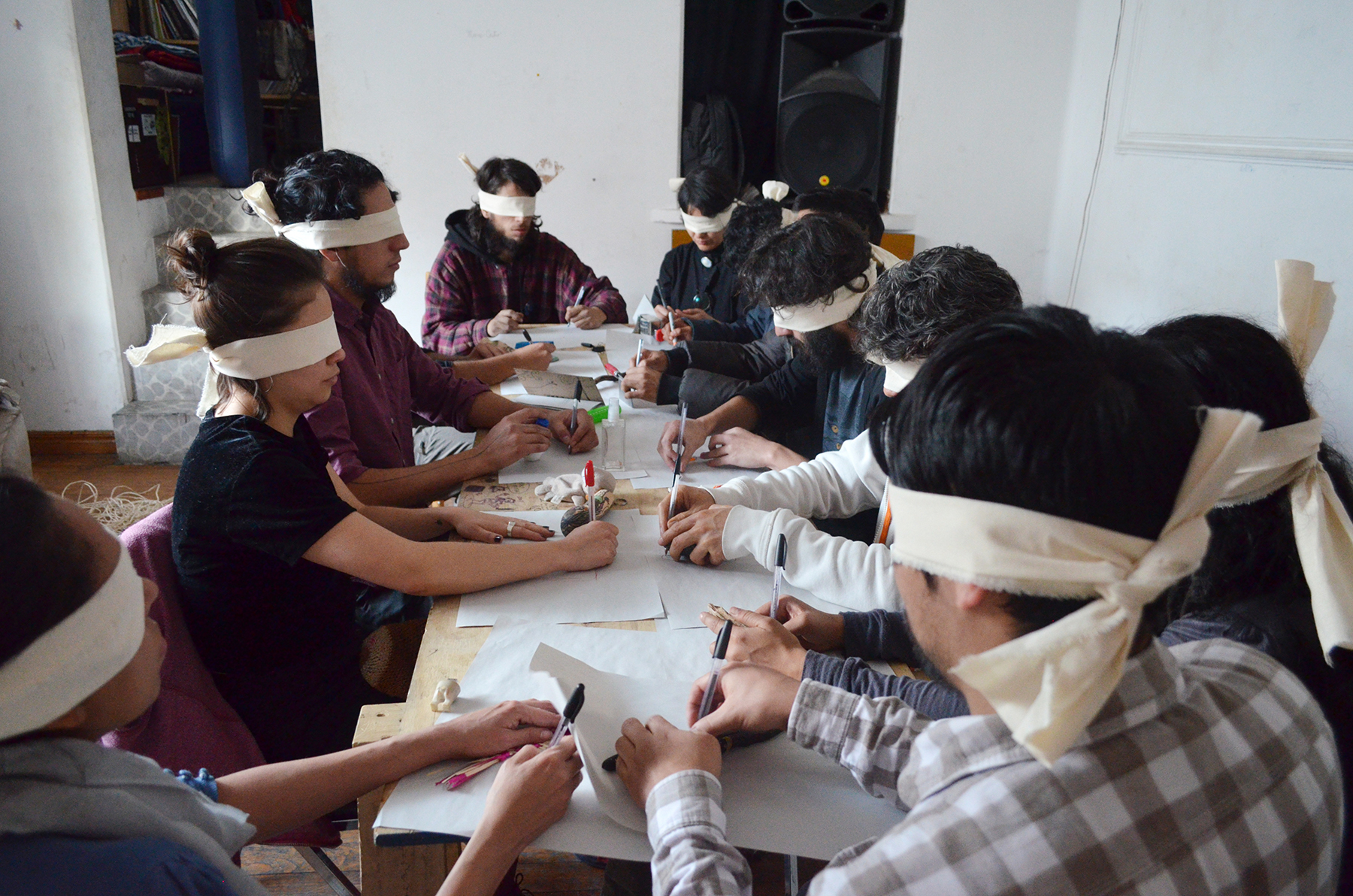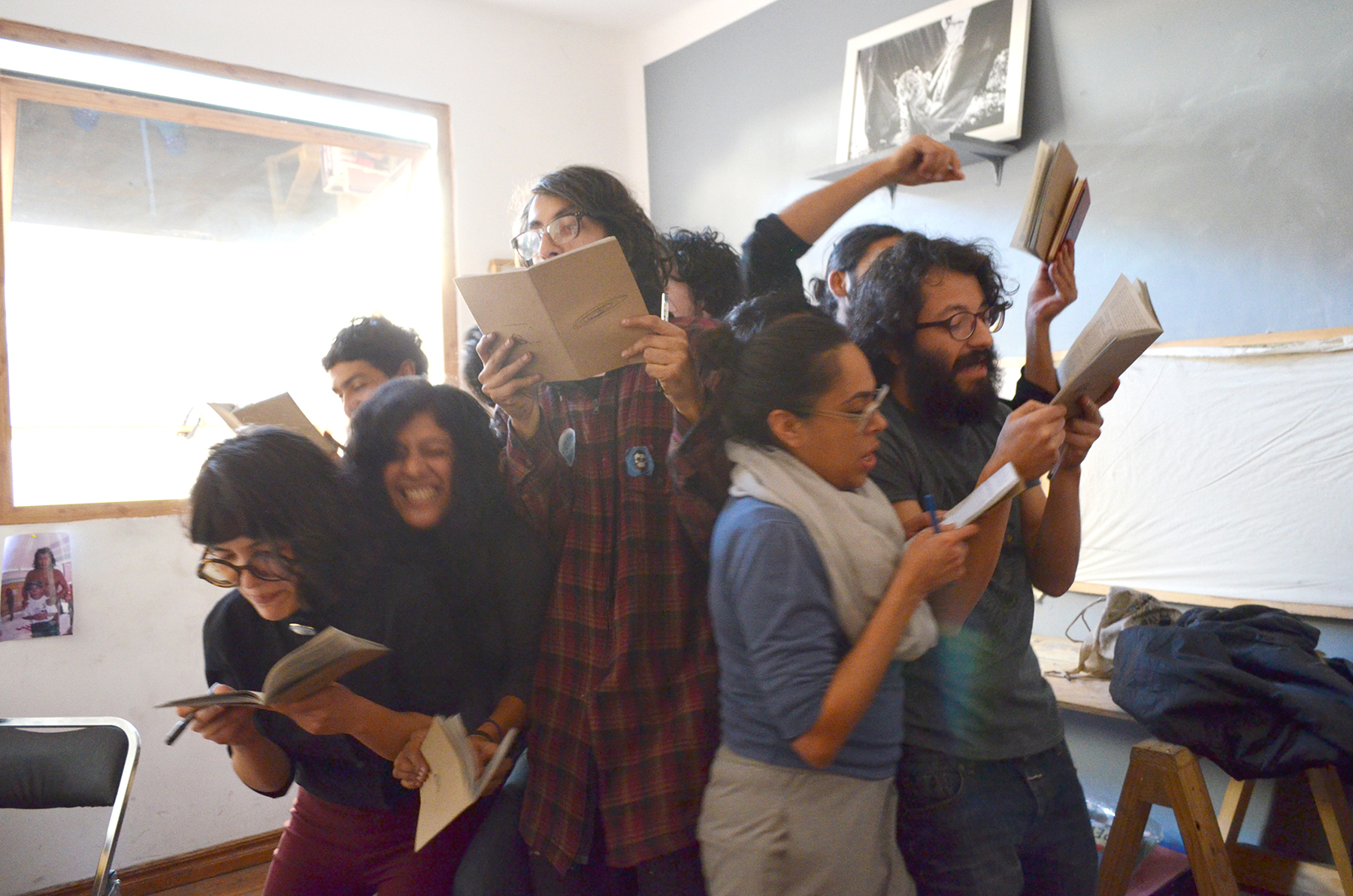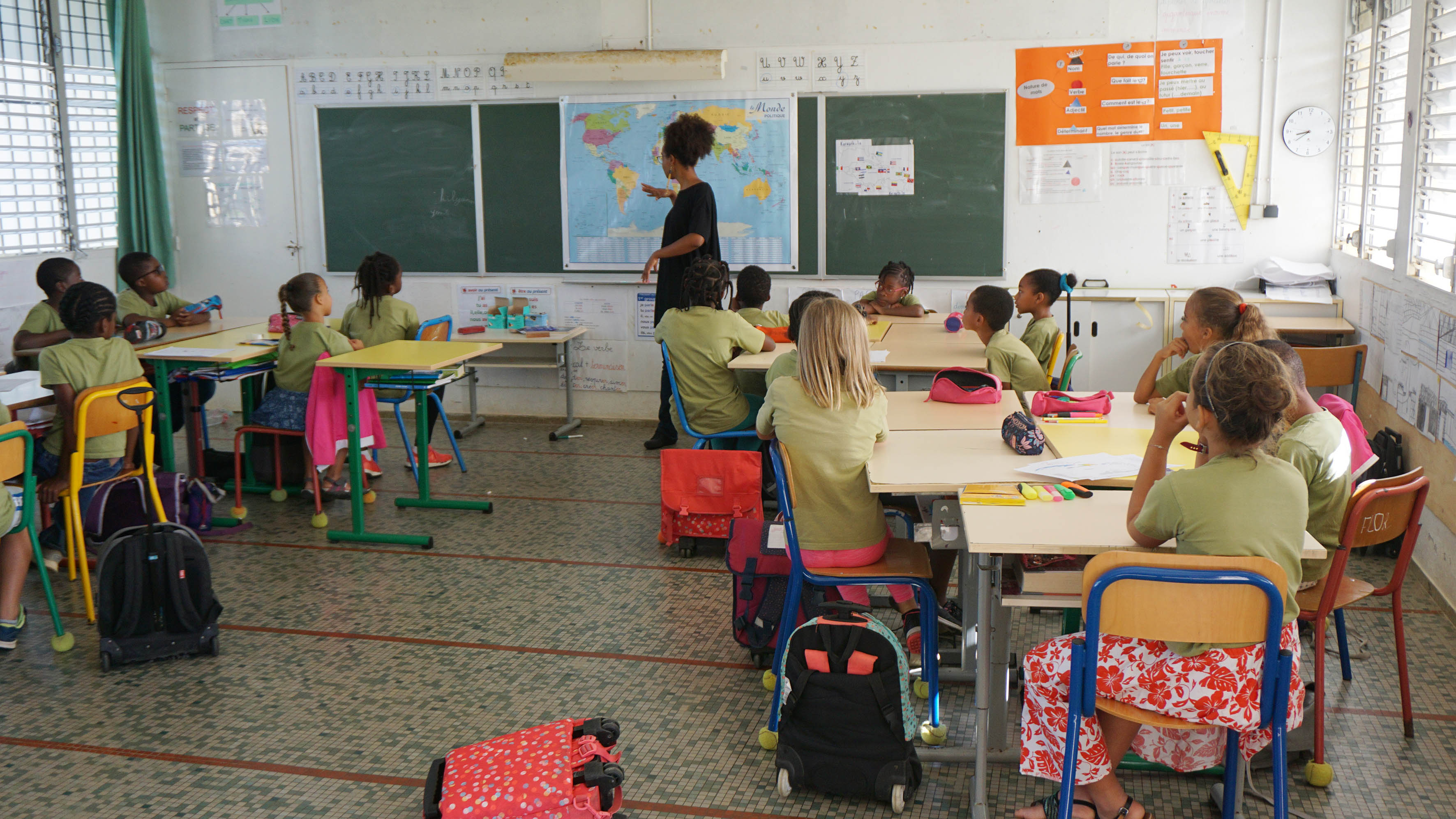
19.08.2019
Building on the encounter between the body and Caribbean imaginary as forms of sensitive and corporeal interpretation for the building of other perspectives outside the colonizing and capitalist format, the artist Minia Biabiany sketches pedagogic reflections on projects she has led, such as Semillero Caribe and Plataforma Doukou.

Body-Trace, Body-Space: Initial Observations on a Caribbean Pedagogic Exploration of the Body and Opacity
We spend our time refuting something instead of affirming it. This imperialist figure does not stop interfering in our processes of reflection and narration of ourselves.
—Dionne Brand [1]
As a group, social behaviors facilitate the identification of resistance with a certain vulnerability, which allows for a change in their respective emotional trajectories, a capacity for sensitive self-knowing.

“Knowledge grows according to lines of correspondence: in the sharing, where they intersect, and in variation, where each becomes itself”. [12] During Semillero Caribe, the poetic force of opaque-doing manifested itself out of the interpenetration of a context, the group energy, the precise rhythm, a trusting disposition, and a willingness to learn. Back in Guadeloupe, I continued to reflect on the productive action of the experience as a privileged way of learning autonomy. Since then, I have led several creativity workshops about the history of Guadeloupe for children in schools [13], and in 2017 I founded Plataforma Doukou. [14]

Dionne Brand, “Forger une langue à la mesure de notre richesse,”
Guadeloupe is owned by France since 1635 and will be successively English and French. Since 1946 it is a French “department”. The Guadalupe archipelago now has a privileged standard of living, higher than in the neighboring islands thanks to a fragile and artificial economy that depends entirely on the European funds.
The naked migrant is a term used by Édouard Glissant. He contrasts the “naked migrant” with the migrant who carries with him goods and symbols that speak of his cultural or religious belonging to the place which he has abandoned. For more information, see: Édouard Glissant, Philosophie de la Relation: poésie en étendue (Paris: Editions Gallimard, 2009).
The forced forgetting of the awareness of corporality, gods, knowledge, and ancestry has been one of the main destructive strategies employed by European settlers in the Americas, who aimed to subjugate the African being and render it docile.
Bigidi is a concept that centers around the idea of imbalance as a new way of moving forward. It was made known by the Guadeloupean choreographer Léna Blou from her observations of Gwo Ka, a traditional Guadeloupean dance. The popular expression in Creole says “embigidi men pa tonbé,” which means bigidi (staggers) but does not fall.” Watch the Youtube video: Léna Blou Le bigidi la parole de l’être! https://www.youtube.com/watch?v=u8Oojo5pJqg [Accessed on May 20, 2019].
Since the eighties, Glissant has questioned in his work the validity of the Western model, its formation and logic of domination, and its notion of progress. His concept of the Relation and rhizomatic identity proposes another reading of what identity is, in its movement and its encounters, without valorizing one cultural model over another.
For example, when, in several passages, Glissant states that he “speaks in the presence of all the languages of the world,” he conveys that it is not necessary to understand all languages in order to be in touch with them, while simultaneously pointing out the dramatic disappearance of the languages of many indigenous peoples.
The name Semillero Caribe is a play on words. We chose the word semillero and not “seminary” in order to differentiate our approach from a classical theoretical context of learning by integrating the metaphoric action of planting seeds, each with its own needs and time of germination, as well as to recognize the existence of the semilleros and booklets of the EZLN (Zapatista Army of National Liberation).
This epistemological nucleus gave rise to the same number of trilingual publications responding partially to the linguistic diversity of the Caribbean (English, French, and Spanish) conceived as the pedagogical supports of the Semillero Caribe. Semillero Caribe’s publications were produced under the Creative Commons and may be freely accessed through the following link https://www.dropbox.com/sh/4qbrc7gt53a738g/AACmumaGtwg21TSp8RT2TlIfa?dl=0 [Accessed on May 20, 2019]
Each nuclear family generates systemized reactions in the face of their own perception of an emotion. Any social sphere responds to and generates codes of behavior in front of emotions, which in turn usually become habits. How can we cause a re-signification of emotions to emerge that offers the possibility of receiving and experiencing these emotions in an unusual way in order to change one’s perspective at the moment of one’s reaction when observing the experience of an emotion? How can the revised concepts provide a vivid perspective on the deconstruction of coloniality? My research hypothesis is that the concept works as a multifocal experience that emanates from a conception of what the act of understanding is like a succession of stages never detached from the emotional.
In the act of group sharing there is a constant double activation that moves from the stage of listening—of receiving the experience of another person—to the comparison with what one has lived. It is also a stage of formulation, of translating the lived into words. In order to do this, it is necessary to revisit lived experience through a mental, emotional, and physical activation that travels continuously between the gesture and the word. To share in a group is to constantly flow from one level of passivity or activity to another. To learn more about the relation- ship between passivity and activity, see: Tim Ingold, L’anthropologie comme éducation, éditions Paideïa (Rennes: PUR Presses universitaires de Rennes, 2018).
Tim Ingold, L’anthropologie comme éducation. Éditions Paideia, Presses universitaires de Rennes, 2018.
Project Wi’an Art, Questionner en rézistans with the artist Jean-François Boclé.
The word doukou refers to a lunar phase in Guadeloupean Creole. It is observed in order to know when to sow, prune, and harvest. It involves acting at the right time to complete the phase of a cycle.
Tópicos entre trópicos is a platform for artistic practices managed by the curator Yolanda Chois. It is projected as a program of thoughts and actions ex- changed between people who live in places whose realities share a colonial past, elements of the African diaspora, cultural miscegenation, political and aesthetic crisis, and, for the most part, are marginal or peripheral territories.
Odile Ferly, A Poetics of Relation: Caribbean Women Writing at the Millennium (New York: Palgrave Macmillan, 2012).
Watch the Youtube video: Francisco Varela: Né pour organiser (FR / ENG / ESP) (2/2) https://www.youtube.com/watch?v=9qIWCMssyTk [Accessed on May 20, 2019].
Website for the semillero Doukou: https://doukousemilla.wordpress.com/
Comments
There are no coments available.